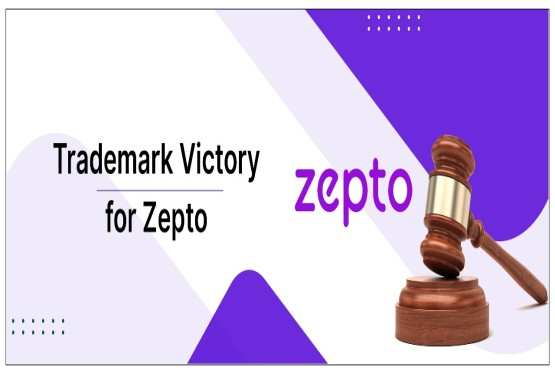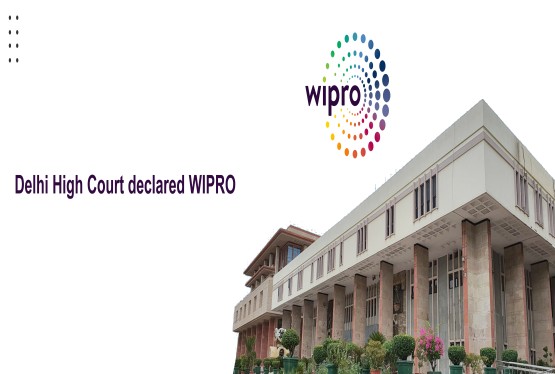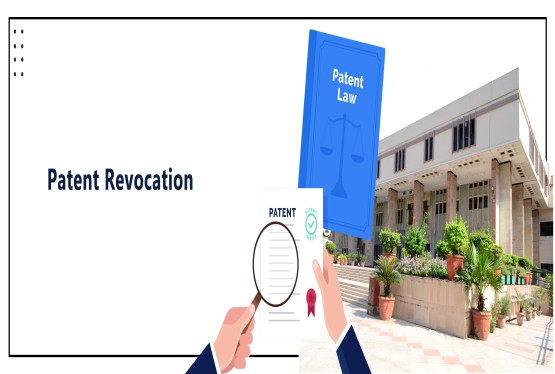In a world where globalization often overshadows local identities, the protection of region-specific products has become increasingly important. Certain goods derive their uniqueness not merely from their ingredients or craftsmanship, but from the geographical region they originate in reflecting the culture, environment, and traditional knowledge of that area. This is where the concept of Geographical Indications (GIs) becomes significant.
A Geographical Indication is a form of intellectual property right that links a product to a specific location, acknowledging that its distinct quality, reputation, or other characteristics are essentially attributable to that place of origin. From Darjeeling Tea and Mysore Silk to Pochampally Ikat and Aranmula Mirror, India is home to a diverse range of products that carry a strong geographical identity. The registration and protection of such goods under the Geographical Indications of Goods (Registration and Protection) Act, 1999 aim to preserve traditional knowledge, promote rural economies, and prevent unauthorized use or imitation of regional products.
Legal Framework for Geographical Indication (GI) Tags in India
India provides legal protection to Geographical Indications (GI) under the following statutory instruments:
The Geographical Indications of Goods (Registration and Protection) Act, 1999
This is the primary legislation governing the registration, protection, and enforcement of GI rights in India. The Act came into force on 15th September 2003, with the objective of:
-
Protecting the unique identity and reputation of region-specific goods,
-
Preventing unauthorized use by non-entitled parties,
-
Promoting rural and traditional producers.
The Geographical Indications of Goods (Registration and Protection) Rules, 2002
These subsidiary rules lay down the detailed procedural framework for filing, examination, opposition, renewal, and enforcement of GI registrations.
Administrative Authority
The administration of GI laws is carried out by the:
-
Geographical Indications Registry, located in Chennai,
-
Under the supervision of the Controller General of Patents, Designs and Trade Marks (CGPDTM),
-
Functioning within the Ministry of Commerce and Industry, Government of India.
Who can Apply?
Under Section 11(1) of the Geographical Indications of Goods (Registration and Protection) Act, 1999, an application for registration of a geographical indication may be made by any association of persons, producers, or any organization or authority established by or under any law for the time being in force, provided such applicant represents the interests of the producers concerned. The application must be made in writing in the prescribed form, containing full particulars of the goods and the geographical area of origin, and must be submitted to the Registrar of Geographical Indications along with the prescribed fee as notified under the Geographical Indications Rules, 2002.
Benefits of Geographical Indication (GI) Tags
Establishes a Product’s Geographic Identity
GI tags connect a product to its place of origin, emphasizing that its unique qualities are deeply rooted in that specific region. It signifies that the product couldn’t have been created anywhere else like how Darjeeling tea or Banarasi sarees carry the essence of their birthplace.
Transforms Local Specialties into Recognized Brands
A GI tag works as a powerful branding tool, where the name of the region becomes synonymous with quality and authenticity. It eliminates the need for extensive marketing, as the geographic identity itself builds the product’s reputation.
Empowers Original Producers
GI registration ensures that the actual creators farmers, artisans, and craftspeople benefit directly. It helps eliminate exploitative middlemen, ensuring fairer prices and higher earnings for the local communities involved.
Acts as a Mark of Authenticity and Quality
In a market filled with counterfeits, a GI tag guarantees originality. It assures consumers that they’re purchasing a genuine product, crafted in accordance with traditional methods and regional practices.
Safeguards Traditional Knowledge and Cultural Heritage
Many heritage crafts and indigenous products risk fading into obscurity due to lack of recognition. GI protection revives and preserves these age-old traditions, reinforcing cultural pride and community identity.
Showcases India’s Regional Diversity
GI-tagged goods often serve as cultural ambassadors, drawing global attention to India’s rich diversity. They help promote tourism, generate interest, and expand international market access for regional products.
Promotes Sustainable Practices
Most GI products are created using eco-conscious, traditional techniques like organic farming or handloom weaving that naturally reduce environmental impact, supporting sustainable development.
Provides Legal Safeguards
Once registered, a GI tag offers legal protection against unauthorized use and misrepresentation. It restricts others from falsely claiming the name, thereby securing the product’s integrity and its creators’ rights.
Stimulates Regional Economic Growth
The popularity of GI-tagged products can revitalize local economies by creating employment, increasing income levels, and reviving dormant industries that gain new life through GI recognition.
Enhances Global Market Potential
GI recognition increases a product’s appeal on the international stage. It elevates its status, builds trust among global buyers, and allows Indian products to command apremium pricing in export markets.
Procedure for Geographical Indication (GI) Registration in India
The process of registering a Geographical Indication (GI) in India is governed by the Geographical Indications of Goods (Registration and Protection) Act, 1999, along with the associated Rules of 2002. It involves several legal and procedural steps, outlined as follows:
Determining Eligibility
Before beginning the registration process, it is essential to confirm that the product qualifies for GI protection under Section 2(1)(e) of the Act. The product must originate from a defined geographical area and must possess distinct qualities, a particular reputation, or unique characteristics directly attributable to that region. These attributes may stem from natural conditions such as climate and terrain or from traditional human expertise and practices.
Application Filing
The application for GI registration must be submitted by an association of producers, a group of persons, or an organization or authority that represents the interests of the producers. The applicant must also provide an affidavit affirming their authority to represent such interests. Applications must be submitted in the prescribed form, either directly or through a registered GI agent or legal representative, as per the format stipulated in the Geographical Indications Rules, 2002.
Submission of Required Documentation
The application must be filed in triplicate along with all necessary supporting documents. These include a Statement of Case outlining the specific characteristics and reputation of the product, a map of the geographical area, details regarding the method of production, the structure of the inspection body monitoring quality, and evidence establishing the connection between the product and its region of origin.
Preliminary Scrutiny and Examination
Once the application is received, it undergoes an initial examination by the Registrar to verify compliance with procedural norms. If deficiencies are found, the applicant is allowed a period of one month to correct them. Subsequently, the application is reviewed by a consultative group of subject matter experts to assess the validity of the claims made regarding the GI.
Issuance of Show-Cause Notice (If Necessary)
If the Registrar identifies grounds for objection, a Show-Cause Notice is issued. The applicant must respond within two months, either in writing or by requesting a personal hearing. If the Registrar finds the response unsatisfactory or no response is received within the stipulated time, the application may be rejected. However, the applicant is granted a reasonable opportunity to be heard before any final adverse decision is made.
Publication in the GI Journal
Once the application clears examination, it is accepted and published in the Geographical Indications Journal. The purpose of publication is to invite objections, if any, from the public or interested stakeholders. This must be done within three months from the date of acceptance.
Opposition Proceedings
Any person opposing the registration may file a notice of opposition within three months of publication, with an optional one-month extension. The applicant must file a counter-statement within two months of receiving the notice. Failure to do so results in the application being deemed abandoned. Both parties are then allowed to submit evidence through affidavits and may present arguments during a hearing before the Registrar.
Grant of Registration Certificate
If no opposition is filed, or if the opposition is resolved in favor of the applicant, the GI is registered. A Certificate of Registration is issued bearing the official seal of the Geographical Indications Registry. The registration date is recorded as the date on which the original application was filed.
Renewal of Registration
The initial registration is valid for a period of ten years, after which it may be renewed for additional ten-year terms upon payment of the prescribed fee. Renewal must be sought before the expiry date; failure to do so may result in cancellation of the registration.
Additional Protection for Notified Goods
Certain goods with global recognition (e.g., Darjeeling Tea), as notified by the Central Government, may be granted enhanced protection under the Act. In such cases, a joint application by both the registered proprietor and the producers is required. This ensures stronger protection against misuse and enhances global standing.
Right to Appeal
Any person aggrieved by a decision of the Registrar, such as refusal of registration, may file an appeal before the Intellectual Property Appellate Board (IPAB) within three months of the decision. Orders of the IPAB may, where appropriate, be further challenged before the jurisdictional High Court.
Documents Required for GI Registration in India
In accordance with the provisions of the Geographical Indications of Goods (Registration and Protection) Act, 1999 and the corresponding Rules, 2002, the following documents are mandatorily required for the valid submission of an application for registration of a Geographical Indication:
Application in Prescribed Form (Triplicate)
The application for registration shall be submitted in Form GI-1, as prescribed under Rule 23(1) of the Geographical Indications Rules, 2002, in triplicate. The application must be duly signed and verified, accompanied by the prescribed statutory fee, and addressed to the Registrar of Geographical Indications.
Statement of Case
A detailed Statement of Case must be enclosed, elaborating upon the nature of the goods, their distinctiveness, quality, reputation, or other characteristics, and establishing their direct nexus with the claimed geographical origin. The statement shall form the evidentiary basis for the claim of protection under the GI regime.
Description of Product and its Special Characteristics
The application must provide a comprehensive description of the product, inclusive of its technical specifications, method of manufacture, raw material source, climatic and environmental conditions, and any traditional knowledge or indigenous process involved, which contributes to the uniqueness of the goods originating from the specific geographical location.
Documentary Evidence Establishing Geographical Link
The applicant shall furnish documentary and material evidence substantiating the linkage between the product and its geographical origin, such as:
-
Historical records
-
Scientific reports or data
-
Photographs of production process and location
-
Certificates or testimonials from recognized bodies
-
Research publications or surveys
Certified Copies of Regional Map (Three Copies)
The application must be accompanied by three certified copies of a topographical map clearly indicating the demarcated geographical area or territorial boundary to which the GI pertains. This is to define and confine the scope of protection sought.
Particulars of the Inspection Body
Where applicable, the applicant must disclose the details of the Inspection Structure (as per Rule 32(1)(g)), including the constitution, powers, duties, and mechanisms adopted to regulate, monitor, and ensure compliance with quality standards in relation to the GI goods.
Details of the Applicant(s)
The name, full address, legal status, and capacity in which the applicant is acting (i.e., as a producer, organization, or statutory authority) must be clearly specified. In the event that the application is made on behalf of multiple producers, a collective reference or representation shall be accepted, provided it is demonstrably in the interest of all such producers.
Power of Attorney / Authorization Letter
In cases where the application is filed through an agent, attorney, or legal representative, a valid Power of Attorney or Letter of Authorization must be annexed to the application, authorizing such person to act on behalf of the applicant.
Priority Document (Where Applicable)
If the applicant is claiming convention priority based on an earlier application filed in a member country under any international treaty, a certified copy of the priority document along with its verified translation (if not in English) must be submitted, in accordance with Rule 24.
Conclusion
The system of Geographical Indications in India is not just about intellectual property it’s about preserving the identity of products that are deeply connected to specific regions, traditions, and communities. With a clear legal framework, well-defined procedures, and a growing awareness of its benefits, GI registration has become a meaningful tool for rural development, cultural preservation, and economic empowerment.
What makes GI tags important is that they protect much more than just names. They safeguard the skills, stories, and reputations built over generations. As India continues to promote its rich diversity on the global stage, GIs can play a major role in giving local products the recognition they deserve both at home and abroad.
Strengthening enforcement, simplifying the registration process, and building producer awareness will be key steps moving forward. If implemented effectively, GI protection can truly become a bridge between tradition and progress.
Frequently Asked Questions (FAQs)
Q1. What is a Geographical Indication (GI) tag?
Ans. A GI tag is a form of intellectual property that identifies goods as originating from a specific geographical location, where the product’s unique qualities, reputation, or characteristics are essentially linked to that place.
Q2. Which law governs GI tags in India?
Ans. GI tags in India are governed by the Geographical Indications of Goods (Registration and Protection) Act, 1999, along with the Rules of 2002.
Q3. Who can apply for a GI tag?
Ans. An application can be made by an association of persons, producers, or any organization or authority representing the interest of the producers of the goods concerned.
Q4. What types of products can get GI tags?
Ans. GI tags can be granted to agricultural products, foodstuffs, handicrafts, handlooms, textiles, natural goods, and manufactured items that are closely linked to a specific region and carry distinct characteristics because of it.
Q5. How long is a GI registration valid?
Ans. A GI registration is valid for 10 years and can be renewed indefinitely for successive 10-year periods upon payment of the renewal fee.
Q6. What are the benefits of obtaining a GI tag?
Ans. A GI tag:
-
Protects the product from unauthorized use,
-
Adds commercial and brand value,
-
Empowers local producers and artisans,
-
Promotes exports and tourism,
-
Preserves traditional knowledge and practices.
Q7. Can a GI be used by anyone once registered?
Ans. No. Only registered authorized users are allowed to use the GI tag. Unauthorized use is a legal offence and can be challenged.
Q8. Where is the GI Registry located in India?
Ans. The Geographical Indications Registry is located in Chennai, under the Office of the Controller General of Patents, Designs and Trade Marks (CGPDTM).
Q9. Can a GI registration be opposed?
Ans. Yes. After publication in the GI Journal, any person can file an opposition within three months (extendable by one month) from the date of publication.
Q10. What is an example of a well-known GI-tagged product in India?
Ans. Examples include:
-
Darjeeling Tea (West Bengal)
-
Banarasi Saree (Uttar Pradesh)
-
Mysore Silk (Karnataka)
-
Pochampally Ikat (Telangana)
-
Kashmiri Pashmina (Jammu & Kashmir)






























_(b)_of_the_Trademark_Act,_1999_(1)_crop10_thumb.jpg)



_crop10_thumb.jpg)




























_crop10_thumb.jpg)
_crop10_thumb.jpg)






_crop10_thumb.jpg)








_crop10_thumb.jpg)



_crop10_thumb.jpg)





























_crop10_thumb.jpg)

















_crop10_thumb.jpg)






_crop10_thumb.jpg)












































































































































_crop10_thumb.jpg)




































_crop10_thumb.jpg)












_crop10_thumb.jpg)















































_crop10_thumb.jpg)























































































